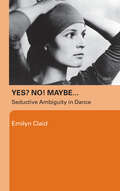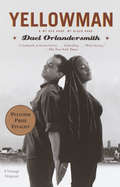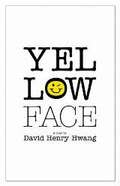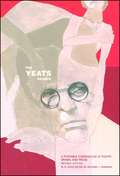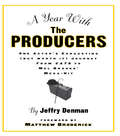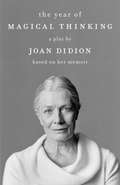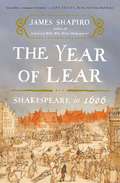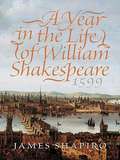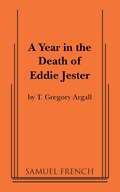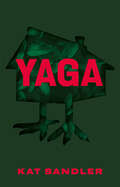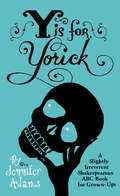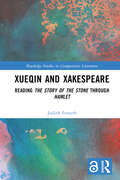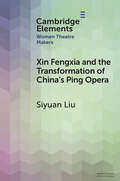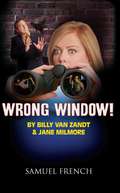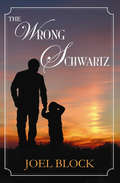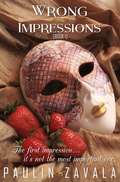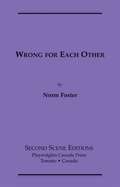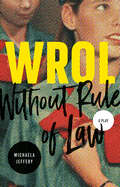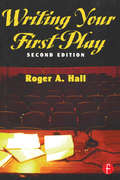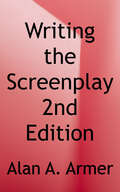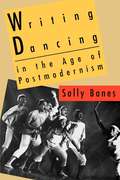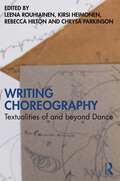- Table View
- List View
Yes? No! Maybe…: Seductive Ambiguity in Dance
by Emilyn ClaidCovering fifty years of British dance, from Margot Fonteyn to innovative contemporary practitioners such as Wendy Houstoun and Nigel Charnock, Yes? No! Maybe is an innovative approach to performing and watching dance. Emilyn Claid brings her life experience and interweaves it with academic theory and historical narrative to create a dynamic approach to dance writing. Using the 1970s revolution of new dance as a hinge, Claid looks back to ballet and forward to British independent dance which is new dance’s legacy. She explores the shifts in performer-spectator relationships, and investigates questions of subjectivity, absence and presence, identity, gender, race and desire using psychoanalytical, feminist, postmodern, post-structuralist and queer theoretical perspectives. Artists and practitioners, professional performers, teachers, choreographers and theatre-goers will all find this book an informative and insightful read.
Yellowman
by Dael OrlandersmithThese two raucously acclaimed new plays by Dael Orlandersmith, whom The New York Times has called "an otherworldly messenger, perhaps the sorcerer's apprentice, or a heaven-sent angel with the devil in her," confirm her reputation as one of the truly unique voices in contemporary American drama.In Yellowman, a finalist for the 2002 Pulitzer Prize in Drama, Alma and Eugene have known each other since they were young children. As their friendship blossoms into love, Alma struggles to free herself from her mother's poverty and alcoholism, while Eugene must contend with the legacy of being "yellow"--lighter-skinned than his brutal and unforgiving father. In My Red Hand, My Black Hand, a young woman explores her heritage as the child of a blues-loving Native American man and a black sharecropper's daughter from Virginia. Alternately joyous and harrowing, both plays are powerful examinations of the racial tensions that fracture communities and individual lives.From the Trade Paperback edition.
Yellow Face
by David Henry Hwang Frank Rich"A pungent play of ideas with a big heart. Yellow Face brings to the national discussion about race a sense of humor a mile wide, an even-handed treatment and a hopeful, healing vision of a world that could be."--Variety"Charming, touching, and cunningly organized as well as funny, [with] an Ibsenite reach and stature far beyond any issues of Hwang's self-image."--The Village Voice"It's about our country, about public image, about face," says David Henry Hwang about his latest work, a mock documentary that puts Hwang himself center stage as it explores both Asian identity as well as race in America. The play begins with the 1990s controversy over color-blind casting for Miss Saigon, before it spins into a comic fantasy, in which the character DHH pens a play in protest and then unwittingly casts a white actor as the Asian lead. Yellow Face also explores the real-life investigation of Hwang's father, the first Asian American to own a federally chartered bank, and the espionage charges against physicist Wen Ho Lee. Adroitly combining the light touch of comedy with weighty political and emotional issues, "Hwang's lively and provocative cultural self-portrait lets nobody off the hook" (The New York Times).David Henry Hwang is the author of the Tony Award-winning M. Butterfly, a finalist for the 1988 Pulitzer Prize. Other plays include Golden Child, FOB, The Dance and the Railroad, and Family Devotions; his opera libretti include three works for composer Philip Glass. He was appointed by President Clinton to the President's Committee on the Arts and Humanities.
The Yeats Reader, Revised Edition: A Portable Compendium of Poetry, Drama, and Prose
by Richard J. Finneran William Butler YeatsThroughout his long life, William Butler Yeats -- Irish writer and premier lyric poet in English in this century -- produced important works in every literary genre, works of astonishing range, energy, erudition, beauty, and skill. His early poetry is memorable and moving. His poems and plays of middle age address the human condition with language that has entered our vocabulary for cataclysmic personal and world events. The writings of his final years offer wisdom, courage, humor, and sheer technical virtuosity. T. S. Eliot pronounced Yeats "the greatest poet of our time -- certainly the greatest in this language, and so far as I am able to judge, in any language" and "one of the few whose history is the history of their own time, who are a part of the consciousness of an age which cannot be understood without them."The Yeats Reader is the most comprehensive single volume to display the full range of Yeats's talents. It presents more than one hundred and fifty of his best-known poems -- more than any other compendium -- plus eight plays, a sampling of his prose tales, and excerpts from his published autobiographical and critical writings. In addition, an appendix offers six early texts of poems that Yeats later revised. Also included are selections from the memoirs left unpublished at his death and complete introductions written for a projected collection that never came to fruition. These are supplemented by unobtrusive annotation and a chronology of the life.Yeats was a protean writer and thinker, and few writers so thoroughly reward a reader's efforts to essay the whole of their canon. This volume is an excellent place to begin that enterprise, to renew an old acquaintance with one of world literature's great voices, or to continue a lifelong interest in the phenomenon of literary genius.
A Year with the Producers: One Actor's Exhausting (But Worth It) Journey from Cats to Mel Brooks' Mega-Hit (A\theatre Arts Book Ser.)
by Jeffry DenmanA behind-the-scenes story with more than a touch of theatrical magic about it, A Year with The Producers is a book for actors and theater fans everywhere.
The Year of Magical Thinking: The Play
by Joan Didion"This happened on December 30, 2003. That may seem a while ago but it won't when it happens to you ..." In this dramatic adaptation of her award-winning, bestselling memoir (which Michiko Kakutani in The New York Times called "an indelible portrait of loss and grief ... a haunting portrait of a four-decade-long marriage".) Joan Didion transforms the story of the sudden and unexpected loss of her husband and their only daughter into a stunning and powerful one-woman play. The first theatrical production of The Year of Magical Thinking opened at the Booth Theatre on March 29, 2007, starring Vanessa Redgrave and directed by David Hare.
The Year of Lear: Shakespeare in 1606
by James ShapiroPreeminent Shakespeare scholar James Shapiro shows how the tumultuous events in England in 1606 affected Shakespeare and shaped the three great tragedies he wrote that year--King Lear, Macbeth, and Antony and Cleopatra.In the years leading up to 1606, since the death of Queen Elizabeth and the arrival in England of her successor, King James of Scotland, Shakespeare's great productivity had ebbed, and it may have seemed to some that his prolific genius was a thing of the past. But that year, at age forty-two, he found his footing again, finishing a play he had begun the previous autumn--King Lear--then writing two other great tragedies, Macbeth and Antony and Cleopatra. It was a memorable year in England as well--and a grim one, in the aftermath of a terrorist plot conceived by a small group of Catholic gentry that had been uncovered at the last hour. The foiled Gunpowder Plot would have blown up the king and royal family along with the nation's political and religious leadership. The aborted plot renewed anti-Catholic sentiment and laid bare divisions in the kingdom. It was against this background that Shakespeare finished Lear, a play about a divided kingdom, then wrote a tragedy that turned on the murder of a Scottish king, Macbeth. He ended this astonishing year with a third masterpiece no less steeped in current events and concerns: Antony and Cleopatra. The Year of Lear sheds light on these three great tragedies by placing them in the context of their times, while also allowing us greater insight into how Shakespeare was personally touched by such events as a terrible outbreak of plague and growing religious divisions. For anyone interested in Shakespeare, this is an indispensable book.
A Year in the Life of William Shakespeare
by James S. ShapiroThose with a keen interest in Shakespeare will enjoy insight into the man, his work and his times. Shapiro knows his readership will be a motivated one and is counting on the subject material to drive them to carry on. What makes the book an engaging read is the political context it provides. We begin to understand why he wrote some of his plays and certain characters, and what pressures he would've dealt with keeping his craft "cutting-edge", but popular to the masses, as well as staying in the Queen's favor.
A Year in the Death of Eddie Jester
by T. Gregory ArgallStand up comic Eddie Jester has been mugged and is comatose. His disembodied spirit offers up jokes and commentary on the events transpiring in his hospital room, including the simultaneous visit to his bedside of his wife and his girlfriend and some nonmedical doctor/nurse activities. Eddie's semi posthumous examination of life, love and human relationships provides funny and poignant insights while the duplicity of his agent, revelations about his father and the births of two children demonstrate to Eddie that sometimes even your own life carries on without you. FEE: $75 per performance.
Yaga
by Kat SandlerYaga is a mash-up of police procedural, noir thriller, comedy, and lore.Kat wanted to point out how society speaks of and labels women, especially older women.
Y is for Yorick: A Slightly Irreverent Shakespearean Abc Book For Grown-ups
by Jennifer AdamsThis delightfully illustrated ABC book for grown-ups offers a fresh and irreverent take on Shakespeare&’s most memorable characters. The plays of William Shakespeare contain some of the most renowned characters and stories in all of literature. The perfect gift for any fan of The Bard, Y is for Yorick takes playful jabs at the unforgettable plots and people we all know and love. From Ariel (of The Tempest) to Elizabeth (of Richard III), each entry combines amusing illustrations with tongue-in-cheek captions about each character.
Xueqin and Xakespeare: Reading The Story of the Stone through Hamlet (Routledge Studies in Comparative Literature)
by Judith ForsythThis monograph offers a detailed consideration of the five-volume novel written by Cao Xueqin and translated into English as The Story of the Stone, when read through William Shakespeare’s drama Hamlet, Prince of Denmark, A Tragedy in Five Acts. The book builds on the superlative David Hawkes/John Minford English language translation, which is inspired by resonances between the English Shakespearean literary heritage and the dynasties-old Chinese literary tradition inherited by Cao Xueqin. The Introduction sets out the potential for the significant cultural exchange between these two great literary works, each an inexhaustible inspiration of artistic and scholarly re-interpretation. Two chapters bring into consideration two universal literary themes: patriarchy – filial obedience and family honour, and tragic romantic love. These chapters are structured so that a key episode in Hamlet provides the initial perspective, which is then carried through to an episode in The Story of the Stone which offers points of complementarity: in-depth interpretation draws on inter-textual, historical and contemporary contexts referenced from the immense body of scholarly research which has accumulated around these iconic works. The third chapter proposes a new reading of the problematic ‘shrew’ character in the novel, Wang Xi-feng, through tracing the similarities of the structure of the narration of her life and death with a Shakespearean five-act tragedy.
Xin Fengxia and the Transformation of China's Ping Opera
by Siyuan LiuThis Element focuses on Xin Fengxia (1927–1998), a star of the regional xiqu form pingju, and her prominent role in transforming the genre from folk entertainment for the lower class to one of the most notable winners of the xiqu reform after the establishment of the People's Republic of China (PRC) in 1949. The Element's four sections expand from this core concept to include the four stages of her life experience and artistry that shaped her legacy: growing up in China's third largest theatre market Tianjin before 1949, national stardom in Beijing (1949–1957), restricted creativity amidst political upheavals (1957–1975), and as a prominent author after a stroke (1977–1998). Rather than following a biographical approach, these sections zero in on the environment before and after 1949 that made her a prominent pingju reformer and the consequent price of such success.
Wrong Window!
by Jane Milmore Billy Van ZandtComedy Thriller / Characters: 5m, 3f / Set: InteriorVan Zandt & Milmore pay tribute to Master of Horror Alfred Hitchcock, with this comedy whodunit. Off-and-on New York couple Marnie and Jeff enter an even more complicated phase of their relationship when they think they spy their cross-courtyard neighbor do away with his wife. After they draw their torn curtain, the lady vanishes, and suspicion places murder beyond a shadow of a doubt. The bumbling witnesses sneak into their neighbor's apartment - 39 steps away - and the fun begins. Among multiple door-slammings, body-snatchings, and a frantic flashlight chase scene, two questions remain: Who killed Lila Larswald? And... if she's not dead...then who is? The crazy farce plays out on a shadow-box set that allows the audience to be present in one apartment, while viewing the action in its mirror-image neighboring unit across the way. "Take the money and run to this window before it closes!" Two River Times. "If you're a fan of Rear Window on screen, you'll award Wrong Window on stage a perfect 10. A barrage of gag-filled dialogue. Knee-slappingly funny from start to finish! Take the money and run to this window before it closes!" -Philip Dorian, Two River Times
The Wrong Schwartz
by Joel BlockIt might have been just another messy marital triangle with routine melodrama: the stale marriage, the affair--his and hers--and the recriminations. But volatile passions intersected in a manner not unlike the coupling of an explosive and a detonator. Mark Shapiro is a handsome, enormously successful cardiac surgeon with a loving wife, an adoring son, plenty of money and a nightmare in the making. As successful as he is, he hungers for more notoriety and is drawn into believing a mysterious and alluring woman he has met will bring it to him. He also hungers for her. It is an out-of-control type of appetite, nothing short of sexual obsession. All marriages have ups and downs, but when Mark learns who "Mr. Tuesday" is, his wife's lover, his rage is not diminished by his own affair. One night, still irresistibly drawn to the other woman--whose promise has turned to horror--he learns more than he ever wanted to know about the palpable dangers of ambition.
Wrong Impressions [Book I]
by Paulin Zavala Alejandra Mendoza ZacaríasHow much can it affect to want to meet someone? Idealization to a person is powerful and unpredictable. Will he be able to fulfill the expectations, which for years has been created on the girl? Allan Estrada is a man who had just lost his parents, he thought he would never be able to trust anyone, he had been in charge of a millionaire company and he had no idea how to handle it. His luck changed when he met Antonio, who supported him and helped him out of the shadows, and when he began to tell him about his youngest daughter, he was interested in meeting the girl. Only she did not make it easy.
Wrong For Each Other
by Norm FosterA chance meeting in a restaurant, after four years apart, sends a couple flashing back through the highs and lows of their courtship and marriage. It is an hilarious and often heart-breaking look at the rollercoaster ride of a relationship."A tasty comic treat. Characters with whom we can all identify." —London Free Press"Very funny… a charming two-hander." —Globe and Mail
WROL (Without Rule of Law)
by Michaela JefferyConvinced the world at large can’t be trusted to prioritize the well-being of adolescent girls in the event of a cataclysmic event (or just in general), a determined troupe of preteen “doomers” commit to preparing for survival in the post-collapse society they anticipate inheriting. When Maureen, Jo, Sarah, Vic, and Robbie sneak out at night to investigate an ominous hidden lair in the woods, they believe they have stumbled onto proof of what happened to a mysterious local cult that vanished over a decade ago. As they search for vital clues, examining small bones and dusty cans of food for signs of life, they fight to be understood in a world that seems to reject them. What they discover changes everything—eighth grade will never be the same. Part Judy Blume, part Rambo, this darkly comic coming-of-age story for complicated times is for any young woman who has ever been told that she is “too much,” or that what she fears is illegitimate, or that what she has to say is less important than keeping the peace.
Written Voices, Spoken Signs: Tradition, Performance, and the Epic Text (Center for Hellenic Studies Colloquia #1)
by Egbert Bakker and Ahuvia KahaneWritten Voices, Spoken Signs is a stimulating introduction to new perspectives on Homer and other traditional epics. Taking advantage of recent research on language and social exchange, the nine essays in this volume focus on performance and audience reception of oral poetry. These innovative essays by leading scholars of Homer, oral poetics, and epic invite us to rethink some key concepts for an understanding of traditional epic poetry. Egbert Bakker examines the epic performer's use of time and tense in recounting a past that is alive. Tackling the question of full-length performance of the monumental Iliad, Andrew Ford considers the extent to which the work was perceived as a coherent whole in the archaic age. John Miles Foley addresses questions about spoken signs and the process of reference in epic discourse, and Ahuvia Kahane studies rhythm as a semantic factor in the Homeric performance. Richard Martin suggests a new range of performance functions for the Homeric simile. And Gregory Nagy establishes the importance of one feature of epic language, the ellipsis. These six essays centered on Homer engage with fundamental issues that are addressed by three essays primarily concerned with medieval epic: those by Franz Bäuml on the concept of fact; by Wulf Oesterreicher on types of orality; and by Ursula Schaefer on written and spoken media. In their Introduction the editors highlight the underlying approach and viewpoints of this collaborative volume.
Writing Your First Play
by Roger HallWriting Your First Play provides the beginning playwright with the tools and motivation to tell a story through dramatic form. Based in a series of exercises which gradually grow more complex, the books helps the reader to understand the basic elements of drama, conflict, and action. The exercises help the reader to become increasingly sophisticated in the use of dramatic formats, turning simple ideas into a viable play. Topics include: the role of action in drama;developing action and conflict to reveal character;writing powerful and persuasive dialog;writing from personal experience:pros and cons;how to begin the story and develop the storyline. This new edition is thoroughly updated and contains new examples based on contemporary plays. The author has added additional writing exercises and a new student-written one act play. It also contains a new chapter on how to sell your play once it is written.With examples based on student work, this text both inspires and educates the student and fledgling playwright, providing solid tools and techniques for the craft of writing a drama. Roger A. Hall, a professor of theatre at James Madison University, had taught playwriting for nearly 20 years. Many of his students have gone on to write for theatre, television, and the screen. He has written numerous plays and articles and has acted and directed extensively in the theatre.
Writing the Screenplay: TV and Film
by Alan A. ArmerIn this new edition, Emmy - Award winner Alan Armer takes aspiring writers through the essential steps needed to create successful dramatic scripts for TV and Film: visual thinking characters and plotting, story structure and conflict, dialog, and formats.
Writing the Monarch in Jacobean England
by Jane RickardKing James VI and I's extensive publications and the responses they met played a key role in the literary culture of Jacobean England. This book is the first sustained study of how James's subjects commented upon, appropriated and reworked these royal writings. Jane Rickard highlights the vitality of such responses across genres - including poetry, court masque, sermon, polemic and drama - and in the different media of performance, manuscript and print. The book focuses in particular on Jonson, Donne and Shakespeare, arguing that these major authors responded in illuminatingly contrasting ways to James's claims as an author-king, made especially creative uses of the opportunities that his publications afforded and helped to inspire some of what the King in turn wrote. Their literary responses reveal that royal writing enabled a significant reimagining of the relationship between ruler and ruled. This volume will interest researchers and advanced students of Renaissance literature and history.
Writing the History of the British Stage, 1660–1900
by Richard SchochThis is the first book on British theatre historiography. It traces the practice of theatre history from its origins in the Restoration to its emergence as an academic discipline in the early twentieth century. In this compelling revisionist study, Richard Schoch reclaims the deep history of British theatre history, valorizing the usually overlooked scholarship undertaken by antiquarians, booksellers, bibliographers, journalists and theatrical insiders, none of whom considered themselves to be professional historians. Drawing together deep archival research, close readings of historical texts from the seventeenth, eighteenth and nineteenth centuries, and an awareness of contemporary debates about disciplinary practice, Schoch overturns received interpretations of British theatre historiography and shows that the practice - and the diverse practitioners - of theatre history were far more complicated and far more sophisticated than we had realised. His book is a landmark contribution to how theatre historians today can understand their own history.
Writing Dancing in the Age of Postmodernism
by Sally BanesDrawing of the postmodern perspective and concerns that informed her groundbreaking Terpsichore in Sneakers, Sally Banes's Writing Dancing documents the background and developments of avant-garde and popular dance, analyzing individual artists, performances, and entire dance movements. With a sure grasp of shifting cultural dynamics, Banes shows how postmodern dance is integrally connected to other oppositional, often marginalized strands of dance culture, and considers how certain kinds of dance move from the margins to the mainstream.Banes begins by considering the act of dance criticism itself, exploring its modes, methods, and underlying assumptions, and examining the work of other critics. She traces the development of contemporary dance from the early work of such influential figures as Merce Cunningham and George Balanchine to such contemporary choreographers as Molissa Fenley, Karole Armitage, and Michael Clark. She analyzes the contributions of the Judson Dance Theatre and the Workers' Dance League, the emergence of Latin postmodern dance in New York, and the impact of black jazz in Russia. In addition, Banes explores such untraditional performance modes as breakdancing and the "drunk dancing" of Fred Astaire.Ebook Edition Note: Ebook edition note: All images have been redacted.
Writing Choreography: Textualities of and beyond Dance
by Leena Rouhiainen Kirsi Heimonen Rebecca Hilton Chrysa ParkinsonA new contribution to studies in choreography, Writing Choreography: Textualities of and beyond Dance focuses upon language and writing-based approaches to choreographing from the perspectives of artists and researchers active in the Nordic and Oceanic contexts.Through the contributions of 15 dance–artists, choreographers, dramaturges, writers, interdisciplinary artists and artist–researchers, the volume highlights diverse textual choreographic processes and outcomes arguing for their relevance to present-day practices of expanded choreography. The anthology introduces some Western trends related to utilizing writing, text and language in choreographic processes. In its focus on art-making processes, it likewise offers insight into how performance can be transcribed into writing, how practices of writing choreograph and how choreography can be a process of writing with. Readers, such as dancers, choreographers, students in higher education of these fields as well as researchers in choreography, gain understanding about different experimental forms of writing forwarded by diverse choreographers and how writing is the motional organisation of images, signs, words and texts. The volume presents a new strand in expanded choreography and acts as inspiration for its continued evolution that engenders new adaptations between language, writing and choreography.Ideal for students, scholars and researchers of choreography and dance studies.
